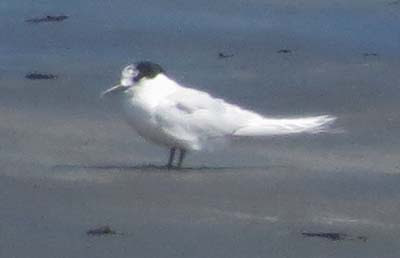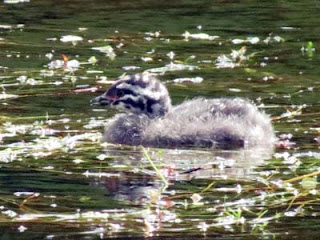Welcome to the Midnight Collective Broadsheet 133
Actively
supporting NZ’s endangered wetland birds
 |
| flocking white fronted terns on Paraparaumu Beach |
The pleasure of living close to a marine reserve is amply
demonstrated in this large gathering of white fronted terns, that over the past week
have taken up residence on this coast, and are following schools of fish,
shoaling through the reserve.
 |
| In flight |
Something must be going right to find such a large
congregation which, as these photos reveal, includes many adolescent birds.
 |
| Rested up |
 |
| adolescent |
We counted 216 squatting on the
beach, then the next day they were back in even larger numbers. They feed off-shore with gulls and shags. Then, no doubt, larger marine fish like kahawai and
kingfish are following in train, under water.
 |
| Southern section of Kapiti marine reserve. Island in background |
Yet these reserves remain under constant threat, not simply
from a government that might reverse or modify protecting legislation (as has been
threatened in Australia), but also from illegal fishing. In the days when we were involved
running tours to Kapiti Island, cynical visitors observing the thick beds of
regenerating paua (abalone to our overseas visitors) would joke about DoC staff helping themselves. (It
never happens.)
And there is always the threat of illegal fishing. Here is a
shot of a fishing boat, testing the law by running its nets right along our reserve’s
northern boundaries.
 |
| Fishing boat trawling along northern edge of reserve November 2015 |
 |
| Hand held net, foreground |
 |
| net floats (detail) |
Why? Because the government isn’t providing the funding to
properly police this activity.
There is a worrying level of worldwide cynicism about
governments and the ever widening gap between what they say and what they do. Having
announced the laudable, but harebrained objective of ridding this country of
introduced mammalian pests within
50 years, (that doesn’t include the humans); it is now going to clean up our
rivers within 40.
Noone believes this because...
Is it achievable? No. Is there an election coming up. Yes. Are the Greens polling strongly. Yes. A hung parliament looks a strong possibility which explains why a government that’s spent the best part of nine years now, trying to repeal the RMA (the legislation that puts environmental protection around development), disembowelling the Department of Conservation, and turning our Environmental Protection Authority, (Look Out America!), into the hand maiden of business interests, is now trying to green itself up.
Is it achievable? No. Is there an election coming up. Yes. Are the Greens polling strongly. Yes. A hung parliament looks a strong possibility which explains why a government that’s spent the best part of nine years now, trying to repeal the RMA (the legislation that puts environmental protection around development), disembowelling the Department of Conservation, and turning our Environmental Protection Authority, (Look Out America!), into the hand maiden of business interests, is now trying to green itself up.
The good thing about making lofty pronunciations on the environment is that they carry primetime coverage without giving time to look at what the detail might involve; which always comes down to how much money is going to be put into realising it. Which is why someone can happily place a set net in the middle of our marine reserve without having to worry about the consequences. There is no money to police it.
Massaging the truth in this way is a tried and trusted political strategy but it only works until you get caught out. It was through the risk of epidemics in the 19th century that New Zealand developed a co-ordinated public health system very early; but only on paper. It was passed into law but never adequately funded; the healthy wealthy (who ran the country) drawing the line at funding the healthcare of the poor. Epidemics showed no respect for wealth and class boundaries however and following public panic when the news broke that plague had arrived in Australia, suddenly there was ample cash to begin developing the full cover public health system we have today.
So what is it going to take to protect, fund then police the legislation designed to guarantee the quality of our unique but now threatened environment?
Track we were listening to while posting this... Well in lieu of a song we are putting up this link to a column in the New Zealand Herald we thought you might enjoy...We dare you
Environmental artist Jill Studd's blog
Contact Us





















